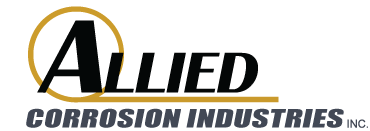1550 Cobb Industrial Dr. | P.O. Box 9098 | Marietta, GA 30065-2098
770-425-1355 (Phone) | 770-425-1354 (Fax) | info@alliedcorrosion.com (Email)
©2018 Allied Corrosion. All rights Reserved.
Made with ❤ by Mighty Good Marketing
Selected:
Model Designation
Specify as EDI Model AR-asd-G.L.TTT where
a = active surface: M for mixed metal oxide or P for platinum
s = substrate: T for titanium or N for niobium
d = rod diameter, inches: 3 for 0.375, 5 for 0.50, 7 for 0.75
G = standoff length, inches: 1 to 9 in 1 inch increments
L = active length, inches: 1 to 9 in 1 inch increments
TTT = micro- inches platinum: 100, 150, 200, 250, 300, or electrolyte for mixed metal oxide: F, B, or S for Fresh, Brackish or Salt water.
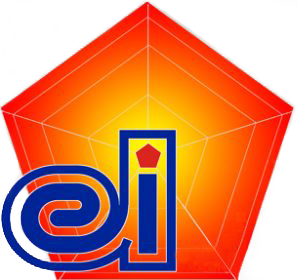
Impressed Current Probe Anodes specifically designed for Immersion Applications
Titanium or Niobium Substrate and MMO or Platinum Coatings Available
Model AR is a thru-wall impressed current probe anode used to protect condenser waterboxes, waterfront structures, storage tanks and other wetted surfaces. It features a resilient mount between the anode rod and the fiberglass reinforced epoxy stand-off. Anode rods are typically 3/8″ or 1/2″ diameter with 2-9″ active and 1-9″ standoffs. Probes are best where current to a remote location is required. Platinum or Mixed Metal Oxide (MMO) coatings can be applied that provide 20 or more years of service life. Probe anodes are intended for use at flow rates of less than 15 ft/sec (4.5 m/sec) and pressures lower than 150 psi (1 MPa).
Proper cathodic protection design requires that adequate current be delivered where needed. Therefore, both the number of anodes and their location within the structure are important. Selection of rod diameter, standoff length and active length are based on many factors related to the conditions within the structure. From a cost perspective it is optimal to use the smallest diameter and shortest length rod with the necessary amount of coating to achieve the required design life while maintaining the objectives.
Titanium and Niobium are used as coating substrates for anodes because they form oxide films that prevent them from corroding in nature. Titanium is the most widely used. It is acceptable for all applications where the voltage between it and the electrolyte is below 10V. It is the only substrate to which either MMO or Platinum can be applied. Niobium is used for those applications where the voltage at its surface is expected to exceed 10V. Only Platinum can be applied to its surface.
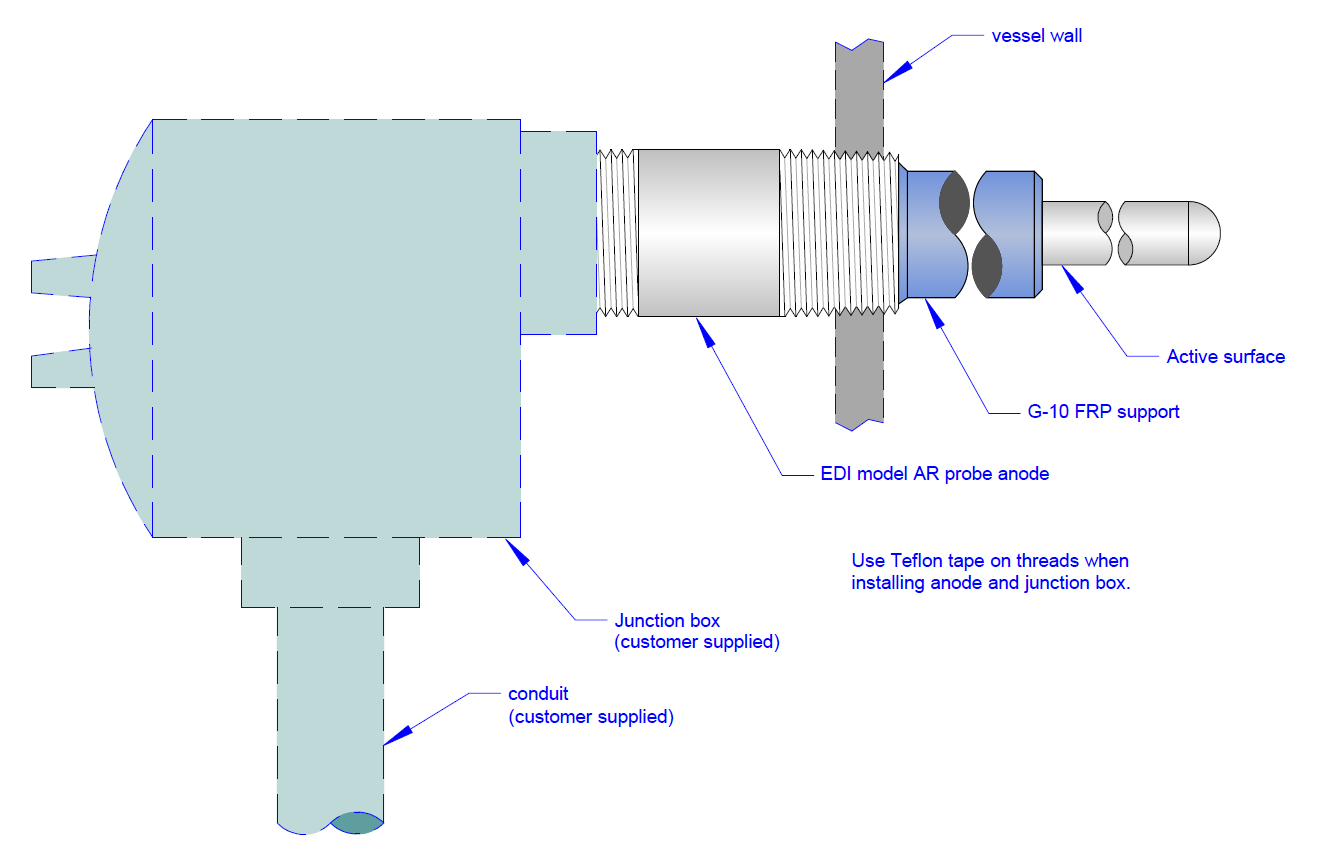
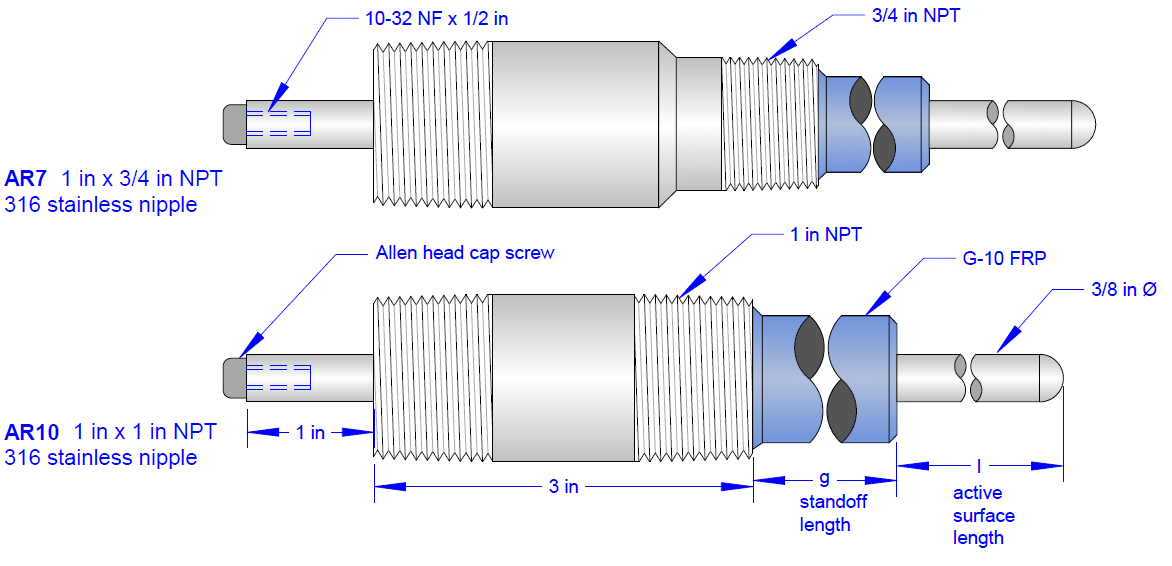
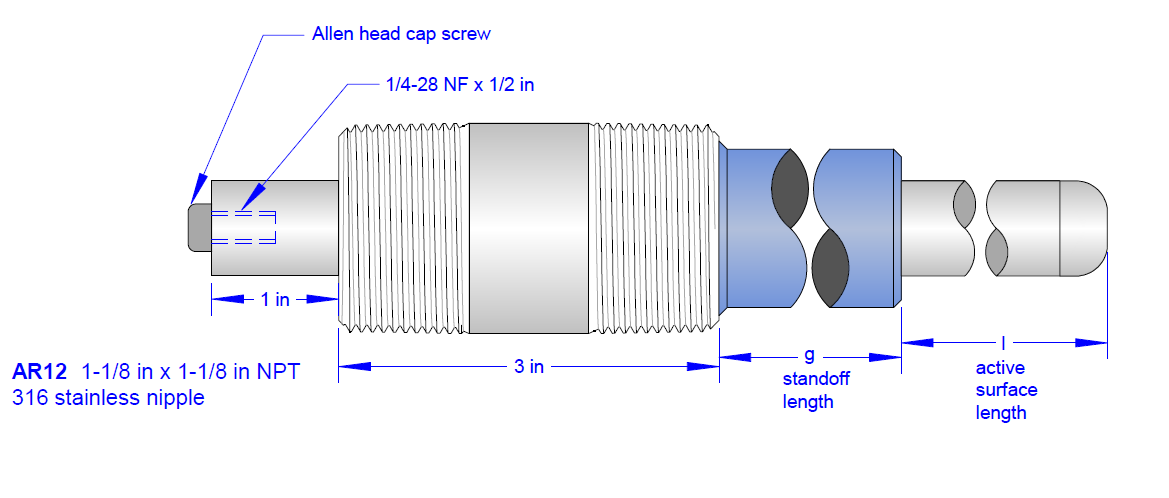
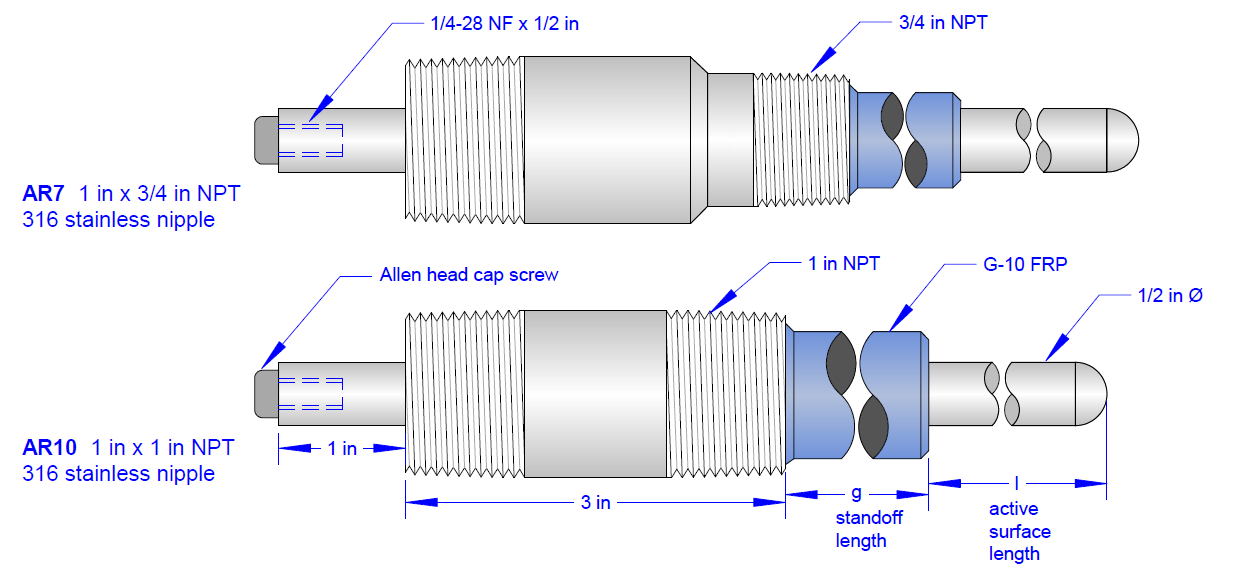
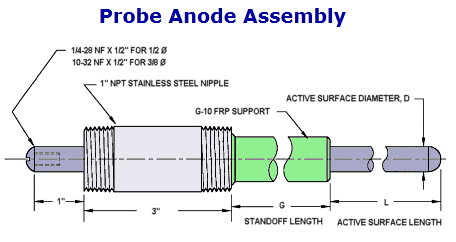
1550 Cobb Industrial Dr. | P.O. Box 9098 | Marietta, GA 30065-2098
770-425-1355 (Phone) | 770-425-1354 (Fax) | info@alliedcorrosion.com (Email)
Made with ❤ by Mighty Good Marketing
We care about your privacy! In order to run a successful website, we are setting cookies and accessing and storing information on your device for various purposes. By continuing to browse this site, you are agreeing to our use of cookies.
If you wish to disable cookies, please visit our Privacy Policy for more information.
